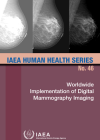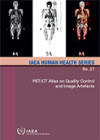One of the most powerful tools of modern medicine is medical imaging. However, using ionizing radiation for medical imaging comes with inherent risks. The IAEA offers training and develops procedures and guidelines to minimize such risks and optimize the related medical practices.
Optimising image quality
Balancing image quality with radiation dose
Medical imaging is used to accurately and timely diagnose health problems, allowing for a more effective treatment of patients. The use of ionizing radiation for imaging has seen a dramatic increase in recent years but is also associated with some amount of risk. Unfortunately, improving the quality of medical images always means increasing the radiation dose to the patient, which in turn increases the radiation risks.
For this reason, the objective of medical imaging is not to deliver the perfect image but one that is diagnostically adequate for the specific health problem. This is the essence of optimization: balancing image quality with radiation dose.
The application of this optimization principle to medical exposure requires a special approach, since too low a radiation dose could be as bad as a too high one: the images obtained could be of unsuitable diagnostic quality.
Optimizing the processes used in medical imaging must start with an audit of the imaging department of the institution that is being vetted, and in particular of the administered radiation doses and the quality of the image that is obtained.
The process requires a team approach and should include the radiologist or nuclear medicine physician responsible for the area, the supervising medical radiation technologist (radiographer), the medical physicist, and possibly a service engineer. Each of these professionals brings their own experience and expertise to the process. Any optimization process must also be developed on a solid quality base, so that both consistency and high performance standards of the imaging chain are confirmed.
The IAEA supports professionals in the field of medical imaging either directly through training or indirectly by developing the relevant procedures and guidelines on the components and requirements for safe and effective medical imaging.
The Agency’s training services can, through a structured process, address the needs of individual professionals (for instance through fellowships and scientific visits) and, via national training courses, of Member States. The IAEA also offers regional and international training courses. In particular in the field of optimization and quality, these courses are catered for radiologists, medical physicists, radiation technologist and other medical professionals. Their goal is to establish quality practices and support optimization exercises.








